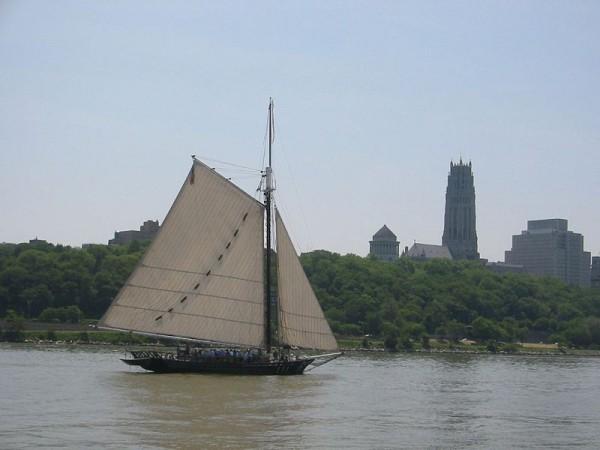
The mysterious ship buried deep underneath the ruins of the World Trade Center is found to have been built in the 1770s.
It was by pure accident that the workers excavating the WTC recovered the ship in July 2010.
"A 30-foot length of a wood-hulled vessel had been discovered about 20 to 30 feet below street level on the World Trade Center site," The New York Times had reported back then.
And researchers and historians have now pieced together the mystery behind the vessel, rated as the first of its kind large-scale archaeological find along the Manhattan waterfront, since the 1980s.
The ship, which piqued the interest of many, was being studied for the last four years by researchers - first at the Maryland Archaeological Conservation Laboratory and then at Columbia University's Lamont-Doherty Earth Observatory.
After a detailed analysis of samples from the ship, scientists at the Columbia University claimed that the vessel was built using wood from white oak trees taken from a forest in Philadephia.
Based on the study on the wood, it has been concluded that the wood was chopped down around 1773 and was built for ferrying passengers and cargo.
"We could see that at that time in Philadelphia, there were still a lot of old-growth forests, and [they were] being logged for shipbuilding and building Independence Hall," Dario Martin-Benito of Columbia's Tree Ring Lab told Live Science.
"Philadelphia was one of the most - if not the most - important shipbuilding cities in the U.S. at the time. And they had plenty of wood so it made lots of sense that the wood could come from there."
The report estimates that the vessel has seen "20 to 30 years" of service and had even taken up voyages as far as the Caribbean islands.
Columbia University researchers tentatively identified the vessel as a Hudson River Sloop. The vessel was reportedly designed by the Dutch to ferry passengers and cargo over shallow, rocky waters.
The researchers are not certain on whether the ship sunk accidently or it was discarded.
It is also estimated that the ship got completely buried in trash and soil by 1818 and remained so till 2010. And since the vessel was sealed up by the clay, the oxygen-free environment prevented it from decay, claims the Archaeology magazine.













